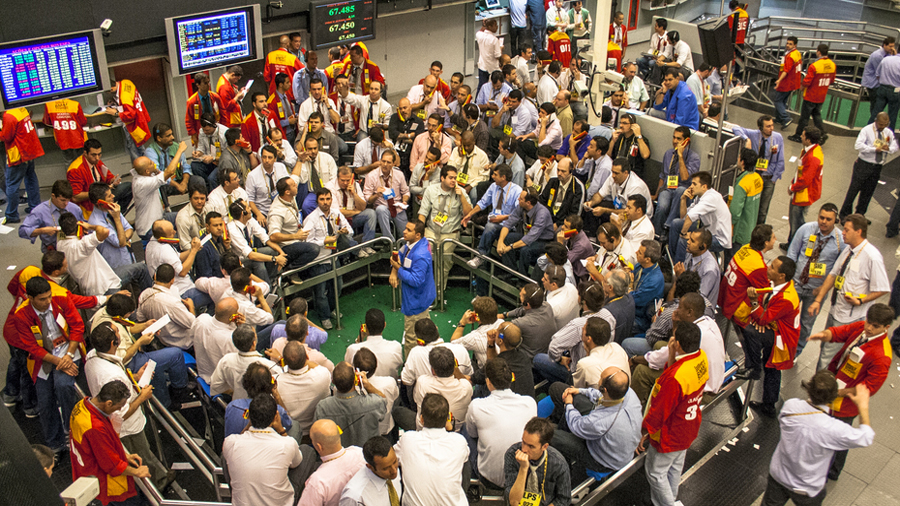March mining madness as copper, iron ore prices rebound

March madness reached the commodities markets on Thursday as investors piled into the mining sector on the back of a jump in the copper price and a renewed iron ore rally
On the Comex market in New York copper for delivery in May climbed as much 2.8% to $2.2925 a pound or some $5,050 a tonne. It’s the highest closing value since November 4 and the red metal is now up more than 18% from a six-year low hit mid-January.
Norilsk said prices are unlikely to rise from today’s levels unless supply is cut significantly
Other industrial metals also gained led by zinc which rose 2% to $1,812 a tonne nearly matching a five-month high hit earlier in March. Nickel rose to $8,765 a tonne on the LME. Nickel was last year’s worst performing metal with a 40% drop and hit a 13-year low mid-February of $7,725.
The world’s largest nickel producer Norilsk said this week prices are unlikely to rise from today’s levels unless supply is cut significantly and inventories drop from the historically high 450,000–500,000 tonne level. The Russian giant estimates 70% of current production is lossmaking. With latest data from the International Nickel Study Group showing the metal moving into a small deficit in January the bottom may be finally in for the volatile commodity.
Iron ore’s white knuckle ride also continued with the steelmaking raw material jumping 5.5% on Thursday to trade at $55.4 a tonne. A week ago iron ore recorded it’s biggest one day rise on record with a 19.5% surge to above $60 but the rally quickly evaporated. Iron ore is still up nearly 30% in 2016.
The surge in US benchmark oil price underpinned the positive mood in the sector after crude surged 4.9% to above $40 a barrel. A 40% rise from near 13-year lows in February month is convincing investors that deflation in the commodities sector may finally be at an end.
Freeport said the copper market is likely to stay in surplus this year despite 700,000 tonnes of supply likely dropping out
Top copper producer Freeport-McMoRan (NYSE:FCX) jumped 6.6% with 53 million shares changing hands. The Phoenix-based company is now worth $15 billion after gaining 61% this year. Freeport is the world’s number one copper producer with output of 1.8 million tonnes last year. The company said this week the copper market is likely to stay in surplus this year despite 700,000 tonnes of supply likely dropping out of the market for the 12 months through June. That’s thanks to “a wave of copper expansion being started this year” according to Javier Targhetta, a senior vice president of marketing and sales at Freeport.
Chile’s Antofagasta (OTCMKTS:ANFGY) rallied 9% in New York, clawing back some of its losses suffered earlier in the week after it reported an 83% drop in annual profits. The $7 billion company is underperforming its peers with a year to date share price performance in single digits. Like Chile’s state-owned Codelco, Antofagasta is skeptical of a substantial rise in the copper price with CEO Diego Hernandez arguing that the rally seems to be “driven more by financial investors than any change in the fundamentals,” adding that a price around $2 or lower is likely for the next two years.
The rally seems to be driven more by financial investors than any change in the fundamentals
World number four copper producer Glencore (LON:GLEN) advanced 9.8% in London on Thursday, bringing its gains in 2016 to a whopping 74% as it recover from record lows hit last year. At the release of the Swiss mining and trading giant’s results last month CEO Ivan Glasenberg said there were “encouraging signs” of the market stabilizing.
Iron ore’s big three also made headway with shares in world number one BHP Billiton (NYSE:BHP) gaining 5% in New York. The $72.6 billion company which relies on oil and iron ore for the bulk of its earnings hit near decade lows last year following a deadly dam burst at an iron ore mine in Brazil it jointly owns with Vale.
BHP CEO Andrew Mackenzie told the Wall Street Journal this week the Melbourne-based company is “very active” in looking at possible acquisitions of copper and petroleum assets while putting any iron ore expansion on hold for the foreseeable future. There has even been speculation that BHP could take a shot at a takeover of Freeport which would give the Anglo-Australian giant control of all three of the world’s biggest copper mines – Escondida in Chile, Grasberg in Indonesia and Morenci in the US.
The world’s second largest miner based on revenue Rio Tinto (NYSE:RIO) added 3.8% in New York affording it a market cap of $53 billion. The Melbourne-HQed company’s shares are trading flat for 2016 and in a surprise move on Thursday announced the departure of chief executive Sam Walsh after only three years at the helm of the company.
There’s been speculation that BHP could take a shot at a Freeport takeover
Walsh became CEO after being in charge of the company’s iron ore division for many years overseeing a radical expansion of operations to within sight of 300 million tonnes per annum. In another sign that the mining supermajors are pivoting towards copper in an effort to reduce their reliance on iron ore, Walsh is being replaced by Jean-Sébastien Jacques, Rio’s copper boss.
Shares in Vale (NYSE:VALE.P), the world’s top iron ore and second largest nickel producer, jumped 4.8% in New York. The Rio de Janeiro-based company is up 35% over the past month for a market value of $21.6 billion. The company’s market value ascended to just shy of $200 billion in January 2011, ahead of its main rival Rio, when both iron ore and nickel were trading at multiples of current prices.
Vancouver’s Teck Resources (NYSE:TCK) enjoyed another scorcher on Thursday soaring 18.8% in New York for a $4.6 billion valuation. The counter is up 130% since the start of the year thanks to the Vancouver-based company’s exposure to the oil price on top of its base metal production.
Anglo American (LON:AAL, OTCMKTS:NGLOY) continued its 2016 recovery adding 7% in New York and enjoying a 77% year to date advance hitting a market value of $11 billion. Anglo, the world’s fifth largest publicly held mining company in terms of output, has embarked on a radical downsizing program to reduce the number of mines it operates from 55 to a mere 16.
BHP Market Cap data by YCharts
More News
{{ commodity.name }}
{{ post.title }}
{{ post.date }}





Comments